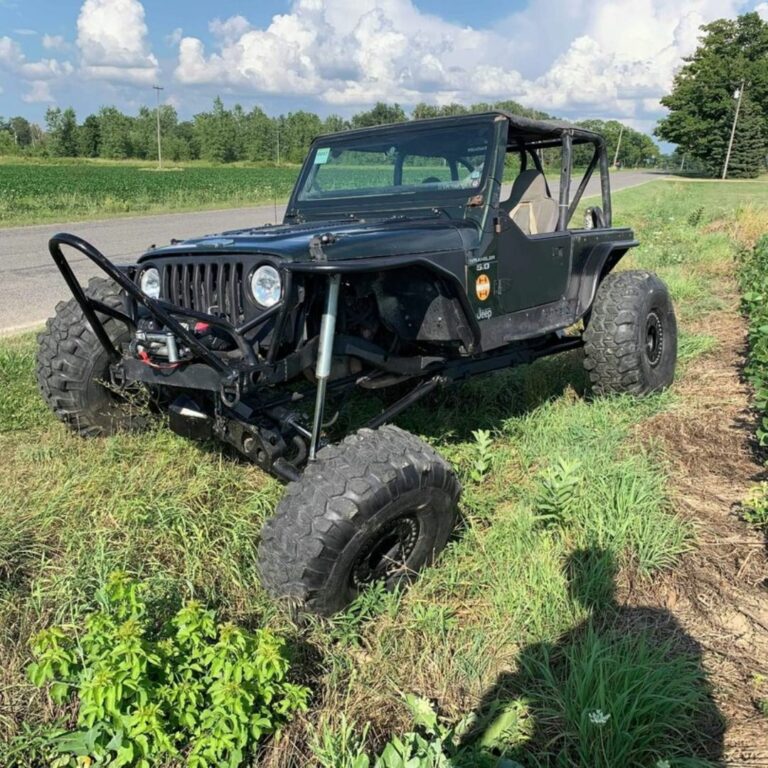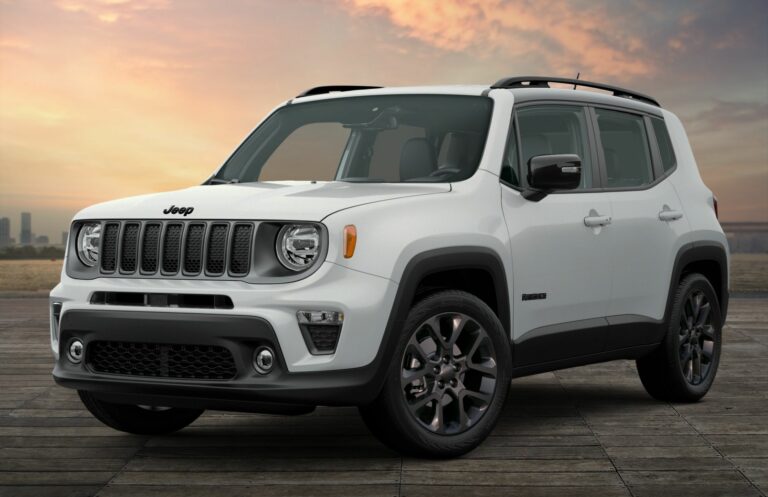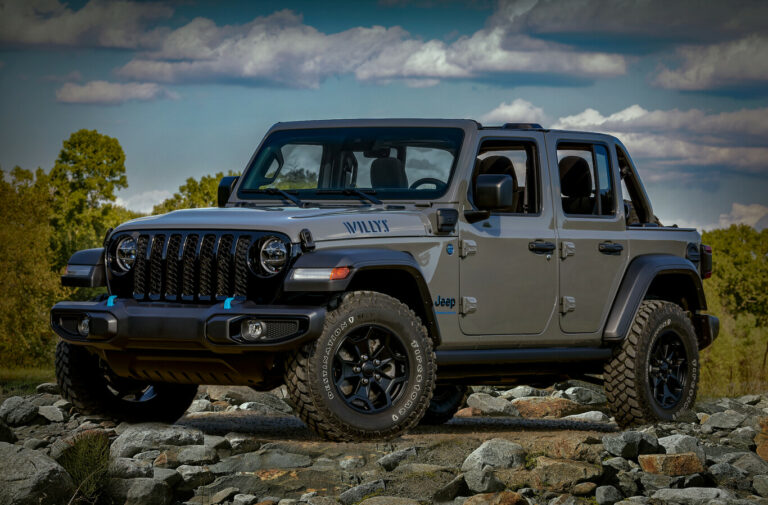Jeep TJ Frames For Sale: Your Ultimate Guide to Restoring or Rebuilding Your Iconic Off-Roader
Jeep TJ Frames For Sale: Your Ultimate Guide to Restoring or Rebuilding Your Iconic Off-Roader jeeps.truckstrend.com
The Jeep Wrangler TJ, produced from 1997 to 2006, holds a special place in the hearts of off-road enthusiasts and daily drivers alike. Known for its coil-spring suspension, round headlights, and undeniable rugged charm, the TJ is a capable and beloved vehicle. However, like any aging vehicle, the TJ has its Achilles’ heel: the frame. Exposure to road salt, moisture, and years of abuse can lead to significant rust, compromising the vehicle’s structural integrity and safety. When faced with extensive frame rot, many TJ owners come to a crossroads: scrap their beloved Jeep, embark on costly and often temporary patch repairs, or seek out a replacement Jeep TJ frame for sale.
This comprehensive guide will delve into everything you need to know about finding, purchasing, and understanding the nuances of a replacement Jeep TJ frame. Whether you’re looking to save a rusty gem, build a custom rig, or simply ensure your TJ’s longevity, a solid frame is the bedrock of your success. It’s more than just a piece of metal; it’s the very foundation that supports every component, absorbs every impact, and ultimately defines the ride and safety of your Jeep. Understanding the market, the types of frames available, and the critical inspection points is paramount to making a wise investment and getting your TJ back on (or off) the road.
Jeep TJ Frames For Sale: Your Ultimate Guide to Restoring or Rebuilding Your Iconic Off-Roader
Understanding the Jeep TJ Frame: The Backbone of Your Beast
The frame of a Jeep TJ is a ladder-style, full-box frame that provides the primary structural support for the entire vehicle. It’s what the body, engine, transmission, axles, and suspension all bolt to. Unlike unibody vehicles, the TJ’s body is separate from the frame, making frame replacement a viable, albeit significant, repair.
Over time, certain areas of the TJ frame are particularly susceptible to rust:
- Skid Plate Mounting Areas: The crossmember directly under the transmission and transfer case, where the skid plate bolts on, is a notorious rust trap. Water and debris get trapped between the skid plate and the frame.
- Control Arm Mounts: Both upper and lower control arm mounts, especially on the rear axle, can rust through due to stress and exposure.
- Rear Frame Sections: The areas around the rear bumper mounts, shackle mounts, and behind the rear wheels often suffer from significant rot.
- Body Mounts: The points where the body mounts to the frame can also rust, causing the body to sag or separate.
- Front Frame Horns: While less common, impact damage or severe front-end exposure can lead to rust or bends in the front frame horns.

Recognizing these vulnerable spots is crucial when inspecting any Jeep TJ frame for sale. Surface rust is often manageable, but structural rust, characterized by flaking, holes, or weakened metal, requires immediate attention and often dictates the need for replacement.

Why Buy a Replacement TJ Frame? Common Scenarios
There are several compelling reasons why a Jeep TJ owner might be searching for a replacement frame:
- Extensive Rust Damage: This is by far the most common reason. When rust has compromised critical structural areas, or if repairs would be more expensive and less reliable than a full swap, a new frame is the best solution.
- Accident Damage: A severe impact can bend or twist the frame beyond repair, rendering the Jeep unsafe. A frame swap can bring it back to life.
- Full Restoration Project: For enthusiasts embarking on a complete, ground-up restoration of a classic TJ, starting with a pristine or new frame ensures a solid foundation for decades to come.
- Custom Builds/Engine Swaps: If you’re planning an ambitious project like an LS engine swap or a heavily modified suspension setup, starting with a reinforced or new aftermarket frame can provide the strength and versatility needed.
- Donor Vehicle for Parts: Sometimes, a frame is purchased as part of a donor vehicle, and the frame itself becomes the primary objective for a different build.

Types of Jeep TJ Frames Available on the Market
When looking for Jeep TJ frames for sale, you’ll generally encounter three main categories, each with its own pros and cons:
1. Used OEM Frames
- Description: These are frames pulled from other Jeep TJs. They can range from severely rusted "parts frames" to remarkably clean frames from dry climates.
- Pros:
- Cost-Effective: Often the cheapest option, especially if you find one with moderate rust.
- Original Fitment: Designed precisely for the TJ, ensuring all components bolt up without modification.
- Authenticity: For those aiming for a period-correct restoration.
- Cons:
- Rust Risk: Even frames from dry climates can have hidden rust, especially in internal sections or tight crevices.
- Hidden Damage: May have sustained previous accident damage, tweaks, or poor repairs that aren’t immediately visible.
- Condition Varies Wildly: It’s a gamble; thorough inspection is absolutely critical.
- Where to Find: Salvage yards, private sellers (often parting out a TJ), online marketplaces (Craigslist, Facebook Marketplace, dedicated Jeep forums).
2. Refurbished/Restored Frames
- Description: These are used OEM frames that have undergone a professional restoration process. This typically involves media blasting to remove all rust and paint, inspection and repair of any damaged sections, reinforcement in common weak spots, and then a durable coating (e.g., powder coat, epoxy paint).
- Pros:
- Known Good Condition: All rust and damage are addressed, providing peace of mind.
- Enhanced Durability: Often coated with superior rust-preventative finishes.
- Ready to Use: Eliminates the need for you to do extensive rust removal and repair.
- Cons:
- Higher Cost: Reflects the labor and materials involved in the restoration process.
- Availability: Less common than raw used frames; often sold by specialized restoration shops.
- Where to Find: Dedicated Jeep restoration shops, custom fabricators, online retailers specializing in refurbished auto parts.
3. Aftermarket/New Reproduction Frames
- Description: Brand new frames manufactured by third-party companies, often using thicker steel or improved designs (e.g., fully boxed sections, enhanced mounts).
- Pros:
- Brand New: Zero rust, no hidden damage, consistent quality.
- Superior Strength: Many aftermarket frames are built stronger than OEM, ideal for heavy off-roading or high-horsepower engine swaps.
- Improved Design: Some offer enhancements like better skid plate clearance or reinforced mounting points.
- Cons:
- Highest Cost: Significantly more expensive than used or even refurbished OEM frames.
- Potential for Minor Fitment Issues: While generally good, minor adjustments might be needed for body mounts or specific components.
- Not "Original": If you’re aiming for a perfectly stock restoration, this might not be the choice.
- Where to Find: Reputable aftermarket manufacturers (e.g., Throttle Down Kustoms, Motobilt, Quadratec, Summit Racing, etc.).
Key Considerations When Purchasing a TJ Frame
Buying a frame is a major investment and undertaking. Here’s what you need to scrutinize:
- Condition is Paramount:
- Rust: Differentiate between surface rust (cosmetic, easily removed) and structural rust (flaking, holes, soft spots when tapped). Pay special attention to the common rust areas mentioned earlier. Use a small hammer or pick to tap suspected areas; a dull thud or piercing indicates rot.
- Bends/Twists: Carefully inspect the frame rails for any signs of bending, twisting, or previous collision damage. Look down the length of the frame from front to back to spot misalignments.
- Previous Repairs: Examine any welded patches or repairs. Are they professionally done, or do they look like amateur "fix-its" that could fail?
- Documentation and VIN:
- The frame of a Jeep TJ typically has a VIN (Vehicle Identification Number) stamped on it, usually near the front passenger side wheel well. Ensure this VIN matches any provided title or bill of sale.
- Understand your local Department of Motor Vehicles (DMV) regulations regarding VIN transfers or "reconstructed" titles when swapping frames. This is a critical legal step.
- Shipping & Logistics:
- Frames are large, heavy, and awkward. Shipping costs can be substantial, often hundreds to over a thousand dollars, depending on distance and carrier.
- Factor in specialized freight shipping, crating, and potential need for a forklift at both ends.
- If picking up locally, ensure you have a suitable trailer and lifting equipment.
- Budget Beyond the Frame:
- Remember to budget for shipping, any necessary repairs or coatings on a used frame, new body mounts, suspension bushings, and potentially new hardware. A frame swap is a massive undertaking; don’t underestimate the "hidden" costs.
- Compatibility: While all 1997-2006 TJ frames are largely similar, there can be minor variations in body mount locations between early and late TJs, or between 4-cylinder and 6-cylinder models (though these are often negligible for frame swaps). Confirm the year range of the donor frame.
The Buying Process: A Step-by-Step Guide
- Determine Your Needs & Budget: Decide if a used, refurbished, or new frame is right for you. Set a realistic budget that includes the frame, shipping, and any immediate work needed.
- Research Sellers: Check online marketplaces (eBay, Craigslist, Facebook Marketplace), specialized Jeep forums (JeepForum.com, WranglerForum.com), salvage yards, and aftermarket retailers. Look for sellers with good reputations.
- Inspect Thoroughly (or Have it Inspected):
- In Person: Ideal. Bring a flashlight, a small hammer, and a camera. Spend significant time examining every inch.
- Remotely: If buying from afar, request an extensive photo and video tour, specifically asking for close-ups of common rust areas, VIN stamps, and any perceived damage. Ask for a video where they tap suspect areas.
- Verify Documentation: Confirm the VIN on the frame matches any provided paperwork. Discuss the title transfer process if applicable.
- Negotiate Price: Don’t be afraid to haggle, especially on used frames where condition can vary.
- Arrange Shipping/Pickup: Confirm logistics, insurance, and delivery expectations.
- Plan for the Swap: Once the frame arrives, ensure you have the space, tools, and potentially professional help lined up for the actual swap.
Tips for a Successful Frame Swap
A frame swap is not for the faint of heart, but with proper planning, it’s achievable.
- Label Everything: As you disassemble your Jeep, meticulously label every wire, hose, and bolt.
- Take Photos/Videos: Document every step of the disassembly process. These will be invaluable during reassembly.
- Invest in a Good Service Manual: A Factory Service Manual (FSM) will provide torque specs and detailed diagrams.
- Have the Right Tools: A good set of wrenches, sockets, floor jacks, jack stands, an engine hoist, and potentially a transmission jack are essential.
- Consider New Parts: While the Jeep is apart, it’s an ideal time to replace worn components like body mounts, suspension bushings, brake lines, and fuel lines.
- Safety First: Always use proper jack stands and never work under a vehicle supported only by a jack.
- Seek Professional Help: If you’re uncomfortable at any point, don’t hesitate to consult or hire a professional mechanic specializing in Jeeps.
Potential Challenges and Solutions
- Hidden Rust: Even after inspection, some rust might be hidden. Solution: Plan to media blast and coat any used frame thoroughly once you have it. This exposes all flaws and allows for proper rust prevention.
- Shipping Damage: Frames can be damaged in transit. Solution: Insure the shipment and inspect the frame thoroughly upon arrival before signing off on delivery. Document any damage immediately.
- Legal/VIN Issues: Transferring ownership or registering a vehicle with a swapped frame can be complex. Solution: Contact your local DMV before purchase to understand specific requirements for "reconstructed" titles or VIN transfers.
- Finding a Good Frame: Clean, rust-free used frames are increasingly rare. Solution: Be patient, broaden your search geographically, and be prepared to pay a premium for quality. Consider a new aftermarket frame if a suitable used one isn’t found.
Estimated Pricing for Jeep TJ Frames For Sale
Please note: These prices are estimates and can vary significantly based on location, seller, condition, and market demand. Shipping costs are separate and can be substantial.
| Frame Type | Condition / Description | Estimated Price Range (USD) | Notes |
|---|---|---|---|
| Used OEM Frame | Heavy Rust, Structural Repairs Needed (Parts Frame) | $200 – $600 | Often only good for sections or as a template. |
| Used OEM Frame | Moderate Surface Rust, Minor Repairs Possible | $700 – $1,500 | Requires blasting and coating. |
| Used OEM Frame | Good Condition, Minimal Surface Rust (Dry Climate) | $1,500 – $3,000+ | Rare find, often from southern/western states. |
| Refurbished/Restored | Blasted, Repaired, Coated, Minor Reinforcements | $3,000 – $5,000 | Ready to install, professional work by specialists. |
| New Aftermarket Frame | Bare Steel, Heavy Duty, Fully Welded (e.g., TDK, Motobilt) | $4,000 – $6,000+ | May require painting/coating, superior strength and rust resistance. |
| Shipping Costs | Varies significantly by distance and carrier | $300 – $1,500+ | Crucial to factor in. Freight shipping is expensive. |
| VIN Transfer/Paperwork | (If applicable, varies by state) | $50 – $300 | Check local DMV requirements before purchasing. |
Frequently Asked Questions (FAQ) about Jeep TJ Frames For Sale
Q1: Can I repair my rusty frame instead of replacing it?
A1: Minor, non-structural rust can often be repaired with patch panels and welding. However, if the rust is extensive, in critical load-bearing areas (like control arm mounts or steering box mounts), or if the metal is severely thinned, a full frame replacement is generally safer and more cost-effective in the long run. Professional frame repair is complex and expensive.
Q2: Do all TJ frames fit all TJ years (1997-2006)?
A2: Generally, yes. All 1997-2006 TJ frames are very similar. There might be minor differences in small brackets or body mount hole sizes, but the overall dimensions and critical mounting points for major components (engine, transmission, axles) are consistent. Always double-check if purchasing a frame from a specific year for a specific year.
Q3: What’s the deal with VINs on frames?
A3: The Jeep TJ frame has a VIN stamped on it (usually passenger side, front frame rail). When you swap a frame, legally, you are typically transferring the identity of the old frame to the new one, or the vehicle may be re-titled as "reconstructed" with the new frame’s VIN. Laws vary by state/country. It is CRITICAL to check with your local Department of Motor Vehicles (DMV) before you buy a frame to understand the legal requirements for VIN transfer, titling, and registration. Failing to do so can lead to significant legal headaches.
Q4: How much does a frame swap typically cost if I pay a shop?
A4: Labor costs for a professional frame swap can range widely, typically from $3,000 to $8,000 or more, depending on the shop’s labor rate, the complexity of the swap, and how many additional parts need to be replaced. This is on top of the cost of the frame itself and any new parts (body mounts, lines, etc.).
Q5: Is it worth buying a frame from a different state, especially a dry one?
A5: Absolutely. Frames from states with dry climates (e.g., Arizona, California, Nevada, Texas) are significantly less likely to suffer from severe rust compared to those from the "rust belt." While shipping costs are high, the cost savings and peace of mind from getting a solid, rust-free foundation often outweigh the shipping expense.
Q6: What tools do I need for a frame swap?
A6: At a minimum, you’ll need a full set of metric and standard wrenches and sockets, various extensions and ratchets, an impact wrench (air or electric), penetrating oil, cutting tools (grinder, sawzall for stubborn bolts), floor jacks, heavy-duty jack stands, an engine hoist, and potentially a transmission jack. A well-equipped garage with plenty of space is ideal.
Conclusion: A Solid Foundation for Your TJ’s Future
The decision to purchase a replacement Jeep TJ frame for sale is a significant one, but for many enthusiasts, it’s the ultimate solution to breathe new life into a beloved off-roader. Whether you opt for a carefully inspected used frame, a meticulously restored OEM unit, or a robust new aftermarket option, the goal remains the same: to provide a solid, rust-free foundation for your Jeep.
By understanding the types of frames available, diligently inspecting potential purchases, and meticulously planning the swap process, you can transform a rusted-out relic into a capable and reliable vehicle once more. It’s an investment in your Jeep’s longevity and your continued enjoyment of the trails and open road. With a solid frame beneath you, your Jeep TJ will be ready for many more adventures to come.




